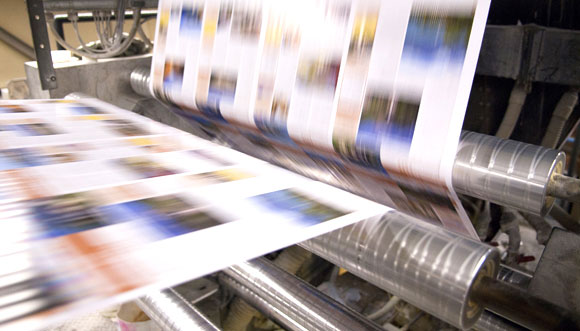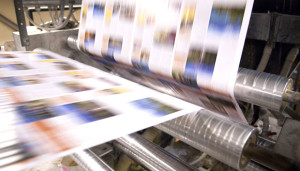
Heatset or Non-Heatset Web Presses ?
Heatset or Non-Heatset Web Presses ?
 Web presses are divided into two categories: heatset and non-heatset (also known as coldset webs). Both types of such presses do their job by printing on paper rolls fed into the printing equipment not stacks of paper. It is all about temperature!
Web presses are divided into two categories: heatset and non-heatset (also known as coldset webs). Both types of such presses do their job by printing on paper rolls fed into the printing equipment not stacks of paper. It is all about temperature!
At a closer look, anyone should notice that heatset web presses have more components than coldset ones. They come equipped with ovens at the delivery end of the press. The purpose of these ovens is to flash off the solvent in the ink, drying the ink film on the paper’s surface as the paper runs through the press. Upon leaving the oven, the paper then passes through chill rollers, which also enable the drying process. They also may have finishing equipment, such as in-line folders, which create a complete final product ready for binding.
Non-heatset web presses are different in one major way, that is, they do not have ovens or chill rollers, thus, ink dries more slowly by absorption or evaporation.
Clearly, the difference between the two types of presses determines the kind of job for which each represents the best solution. The ink can be printed on a coated sheet because intense heat dries quickly the ink printed by a heatset web and due to this fact, it is suited for long-run, high-quality, four-color work. Some presses may have even eight units (or more), allowing both sides of the uncut ribbon of paper that moves through the press at from 300 fpm (feet per minute) to 3,000 fpm to accept four or more colors of ink at once.
One thing should be kept in mind, though: in most cases paper travels through a web press once, meaning a ribbon of paper running from the rolls at the infeed section, all the way through the inking units, oven, and chill rollers to the delivery end of the press. Here, it is cut into sheets or folded and cut. On the other hand, a sheet fed press, allows the operator to bring back the printed sheets to the infeed section in order to print the opposite side of the sheet or add more ink colors. On the opposite, a web press, must print all ink colors and varnishes in a single pass through the press.
If you are not dealing with long-run less demanding jobs, non-heatset webs are ideal for uncoated paper or the cheap, throw-away newspaper inserts you get on the weekend. Quality issues for this type of press do not share paramount importance. To avoid mottling or uneven printing, area screens and halftones printed on such a press (particularly large screens) must be printed with somewhat coarse line-rulings (150 to 175 lpi).
If you are looking to invest in a web press and you are cost conscious, regarding all points of view, than you should consider acquiring a used web press. As previously mentioned web presses are best solutions for very long press runs, while sheetfed presses work best for shorter press runs. If the equipment was well attended and there were no maintenance issues and it functions properly why spending extra money on a new one?
Web presses have improved significantly, regarding quality and the quality of a four-color printed piece in many cases can be compared to that of a sheetfed printed product. In order to convince yourself look at a selection of samples from your print providers, such as Usedpresses.org to help your make your decision.

Leave a Comment